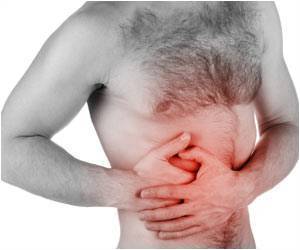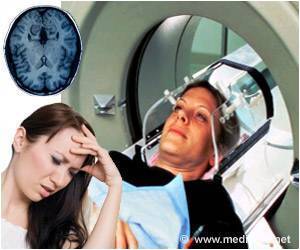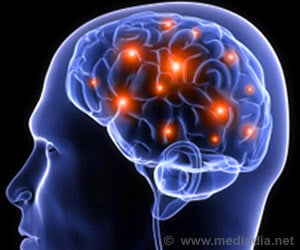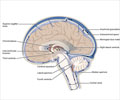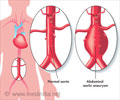- Aneurysms - (http://www.mayoclinic.org/diseases-conditions/aneurysm/basics/definition/con-20032411)
- About Aneurysms - (http://www.nlm.nih.gov/medlineplus/aneurysms.html#cat5)
- Aortic Aneurysm - (http://www.nhlbi.nih.gov/health/health-topics/topics/arm)
What is an Aneurysm?
An aneurysm is an abnormal “ballooning” in blood vessels usually in the wall of arteries.Growing aneurysms increase the risk of rupture and sudden internal haemorrhage which can be dangerous and sometimes fatal.
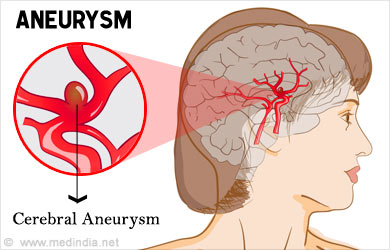
Types of aneurysms
There are three types of arterial aneurysms:
- Aortic aneurysm – occurs in the aorta. The aorta is a major blood vessel carrying blood from the heart to other organs. This type of aneurysm may not show any symptoms even when it is large. It poses the risk of rupture and internal bleeding, which is likely to be severe.
- The aneurysm may be thoracic if it occurs in the aorta in the chest, abdominal if it occurs in the abdominal part of the aorta, or thoraco-abdominal if it extends through both the thorax and the abdomen.
- Cerebral aneurysm – occurs in the walls of arteries supplying blood to the brain. This type of aneurysm also may not show symptoms and sometimes ruptures leading to bleeding within the skull, resulting in a stroke. A stroke can lead to brain damage and even death.
- Most cerebral aneurysms are located in the network of blood vessels at the base of the brain which is known as Circle of Willis.
- Peripheral aneurysm – occurs in other blood vessels in the body, for example, arteries in the leg or neck.
Causes of Aneurysms
There are several causes of aortic and cerebral aneurysms, which include genetic and acquired cause.
Causes of aneurysms include:
- Atherosclerosis, which is accumulation of fatty deposits on artery walls. A split in the thickened wall can result in weakness in the wall and formation of an aneurysm.
- Connective tissue disorders that are genetic in origin like Marfan’s syndrome where the aortic walls are generally weak. Other genetic conditions that increase the risk factor for aneurysm are Ehlers-Danlos and Loeys-Dietz syndromes.
- Hypertension - Poorly controlled or untreated hypertension, which weakens arterial walls.
- Cigarette smoking is a major cause of aneurysms. It increases the risk of atherosclerosis and hypertension leading on to aneurysms.
- Vasculitis is an inflammation of the blood vessel that can sometimes cause aneurysms.
- Cocaine use also causes aneurysms, especially in blood vessels supplying to the heart.
- Trauma, where there is a damage to a main artery. Injuries also increase the risk of rupture of an aneurysm.
- Infections like syphilis, which can weaken arterial walls
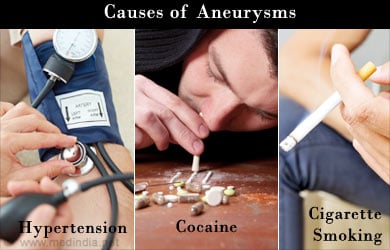
Symptoms of Aneurysms
Symptoms depend on the size and location of the aneurysms. Some aneurysms do not show any symptoms. Very small aneurysms may go totally unnoticed.
Aortic aneurysms usually occur in the abdominal area and may show no symptoms for several years. Some of the symptoms of aortic aneurysms include:
- Abdominal pain radiating to the back
- Back pain
- Throbbing sensations in the abdominal area
- Coughing
- Problems with swallowing or breathing
Cerebral aneurysms usually throw up a range of symptoms just before rupturing. Some of the symptoms of cerebral aneurysms at this stage include:
- Sudden onset of severe headache
- Nausea and vomiting
- Neurological symptoms like visual disturbances, dizziness, confusion, stiff neck
- Seizures
- Loss of consciousness
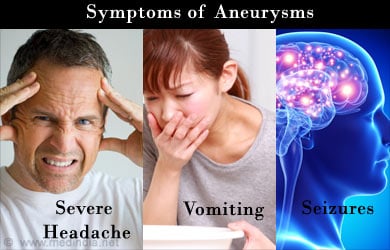
A cerebral aneurysm when ruptured causes internal bleeding in the brain leading on to a hemorrhagic stroke. It can also cause leakage of blood in the areas surrounding the brain.
Diagnosis of Aneurysms
Aneurysms are usually diagnosed through imaging techniques.
Most aneurysms are asymptomatic and diagnosed by chance when the patient is being diagnosed or treated for other conditions. The usual tests to detect an aneurysm include:
- Abdominal ultrasound – to detect an aneurysm in the abdominal region.
- CT scan
- MRI scan
- Cerebrospinal fluid test – to check for subarachnoid hemorrhage. This is also known as a lumbar puncture or spinal tap where the fluid is drawn from the lower back through a hollow needle.
- Cerebral angiography - where a catheter is inserted into a large artery entering the patient near the groin and leading past the heart to the brain arteries. A contrast dye going into the arteries via the catheter indicate the presence of ruptured aneurysms through x-ray images. This is an invasive procedure and used only when non-invasive imaging does not provide sufficient data. This method provides accurate data on the condition of the arteries and exact location of the aneurysm.
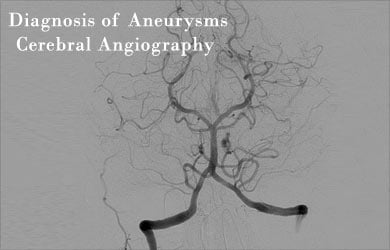
Treatment for Aneurysms
Treatment is necessary to prevent aneurysms from rupturing. Sometimes, monitoring and drug therapy may be effective. For example, beta blockers may slow down the growth of aneurysms in Marfan’s syndrome. Surgery is usually the most effective and successful way to treat an aneurysm. However, surgery may not always be possible in the presence of other risk factors such as sensitive location of the aneurysm, patient age or other co-morbidities.
Treatment for Aortic Aneurysm includes:
- Small aneurysm – if the aneurysm is not more than 4cm in diameter, the best course would be to wait and watch. The patient will require careful monitoring like regular ultrasound every 6-12 months.
- Medium-size aneurysm – if the aneurysm is bigger than 4cm in diameter, the doctor and patient may jointly decide the best course which may include a surgery.
- Large-size, fast growing aneurysm - if the aneurysm is bigger than 5.5cm in diameter and is also fast growing, the only option is a surgery. This is a major and high risk surgery.
Endovascular surgery is a less invasive technique to repair an aneurysm. A graft (woven tube) is inserted into the aorta via a catheter. This strengthens the aorta and prevents the aneurysm from rupture. Patient recovery is faster with this technique.
Surgical treatment for Cerebral Aneurysm includes:
- Surgical clipping - where a metal clip is placed at the neck of the aneurysm to stop the blood flow into the aneurysm.
- Endovascular coiling – where a soft platinum wire is pushed into the aneurysm through the catheter inserted into the groin. The wire, coils in the aneurysm and helps to seal it.
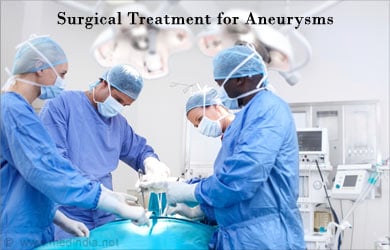
Prevention of Aneurysms
Understanding the risks and taking precautions is the best way to prevent complications from aneurysms. If you have a family history of heart disease or strokes, it is better to get evaluated for risks and follow a healthy lifestyle.
Lifestyle changes include healthy eating and sufficient exercise should be incorporated in the daily routine. It is also important to stop smoking. Managing blood pressure is also an important factor in preventing risks and complications from an aneurysm.

